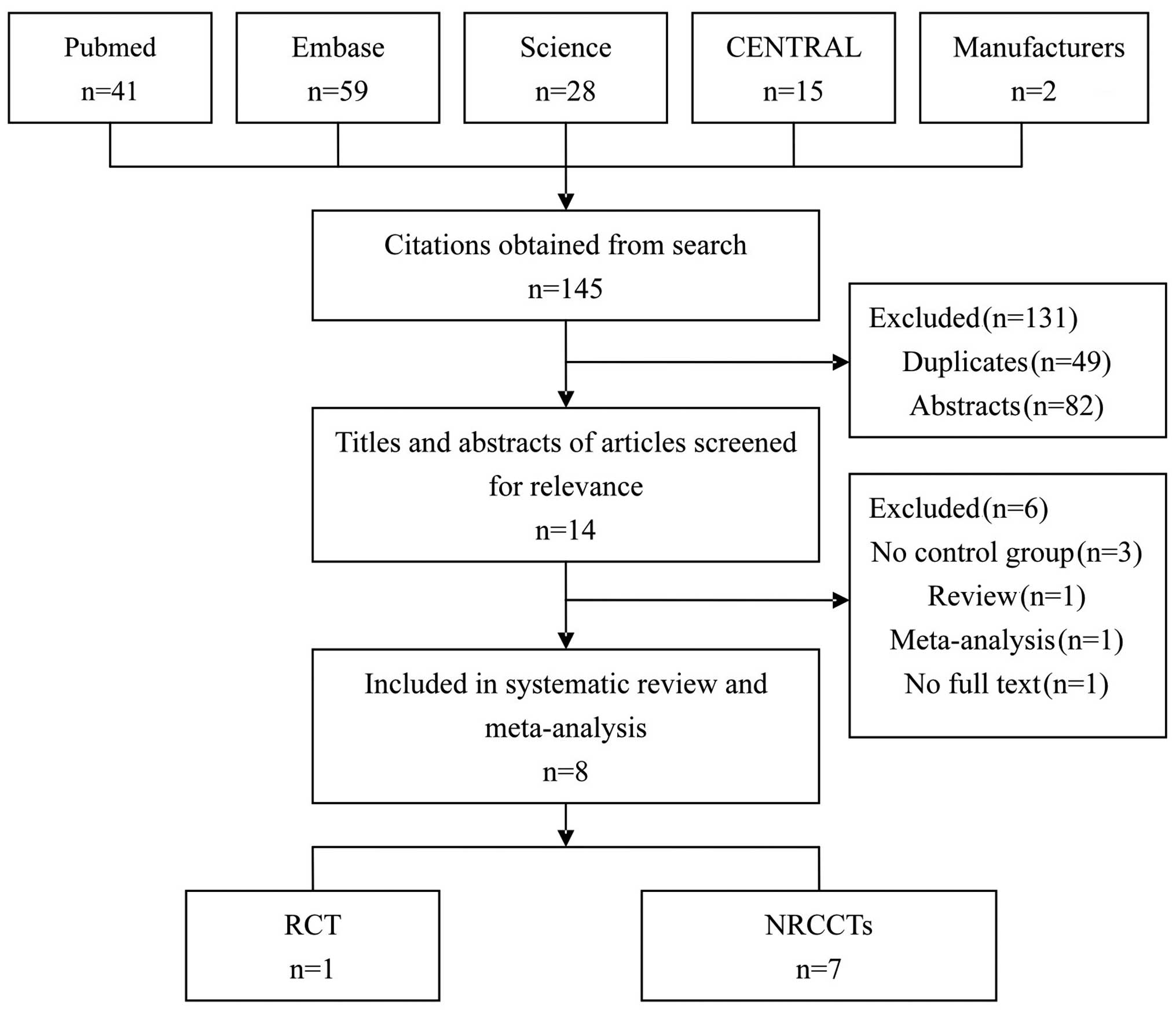Simultaneous transurethral resection of bladder cancer and prostate may reduce recurrence rates: A systematic review and meta-analysis
- Authors:
- Published online on: August 9, 2012 https://doi.org/10.3892/etm.2012.660
- Pages: 685-692
Metrics: Total
Views: 0 (Spandidos Publications: | PMC Statistics: )
Total PDF Downloads: 0 (Spandidos Publications: | PMC Statistics: )
Abstract
The aim of this study was to evaluate the recurrence rate of simultaneous transurethral resection of bladder cancer and prostate (TURBT+TURP) in the treatment of non-muscle invasive bladder cancer (NMIBC) with benign prostatic hyperplasia (BPH). We searched PubMed, the Cochrane Central Register of Controlled Trials (CENTRAL), EMBASE and the ISI Web of Knowledge databases from their establishment until March 2012, to collect all the original studies on TURBT+TURP vs. TURBT alone in the treatment of NMIBC with BPH. After screening the literature, methodological quality assessment and data extraction was conducted independently by two reviewers and meta-analysis was performed using the RevMan 5.1 software. The quality of data was assessed using the Grades of Recommendation, Assessment, Development and Evaluation (GRADE) approach. Eight studies, including seven non-randomized concurrent controlled trials (NRCCTs) and one randomized controlled trial (RCT), involving a total of 1,372 patients met the criteria. Meta-analyses of NRCCTs showed that in the TURBT+TURP group, overall recurrence rates were lower [odds ratio (OR), 0.76; 95% confidence interval (CI), 0.60-0.96; P=0.02] and the difference was statistically significant. The postoperative recurrence rate in the prostatic fossa/bladder neck (OR, 0.96; 95% CI, 0.64-1.45; P=0.86) and bladder tumor progression rates (OR, 0.96; 95% CI, 0.49-1.87; P=0.91) were similar between the TURBT+TURP and TURBT groups, but the difference was not significant. According to the GRADE approach, the level of evidence was moderate or low. Only one RCT demonstrated that overall postoperative tumor recurrence rates, recurrence rates at prostate fossa/bladder neck and bladder tumor progression rates between simultaneous groups and control groups were almost equal. There was no significant difference (P>0.05), and the level of evidence was moderate. For patients with NMIBC and BPH, simultaneous resection did not increase the overall recurrence rate of bladder tumors, it also did not cause metastasis and tumor progression, but it may reduce the recurrence rate. However, due to the low quality of investigations included in the present study, careful selection was necessary, and more large-scale and high-quality randomized controlled trials are also required for further confirmation.













